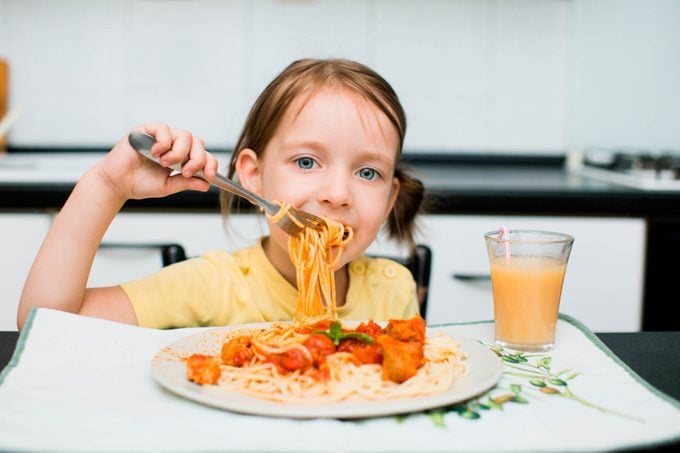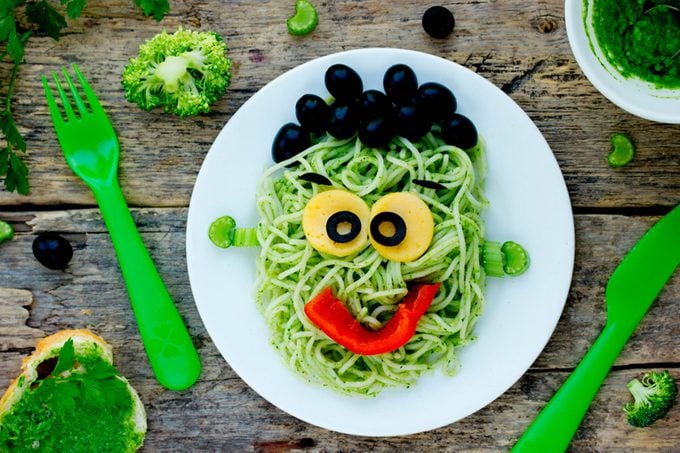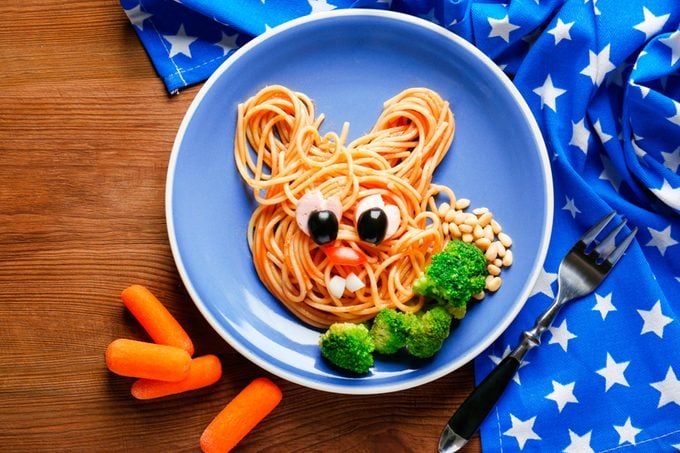Your Kid Only Wants to Eat Pasta? Here’s Why It’s Actually OK
Updated: Dec. 10, 2020
Pasta with butter, pasta with cheese, plain pasta... sound familiar? If noodles are their own food group for your child, new findings suggest there's no need to panic.
If you’re the parent to a toddler or otherwise picky eater, then you know a fundamental truth about their tiny taste buds: Once they find something they like, they stick to it. And when you try and get them to try a Brussels sprout or a bite of broccoli or basically anything other than their beloved pasta, they might fight you every nibble of the way. But is pasta healthy for kids? Ever worry that maybe they’re not getting the nutrients they need?

Well, according to one report, you’re in the clear. Though the research was conducted by the National Pasta Association (yep, that exists!), it’s pretty interesting, claiming that pasta eaters have a better nutrient intake than non-pasta eaters. But you can still kick basic pasta up a notch nutritionally. “The great thing about pasta is it can be a vehicle for other healthy foods, like vegetables, lean protein, and healthy fat, such as olive oil,” says Kaleigh McMordie, RD, a registered dietitian in Lubbock, Texas. “You may have better luck getting your child to consume vegetables in the form of tomato sauce over whole-grain pasta, or vegetables they may not be as fond of, like broccoli, when you mix them into a favorite pasta dish,” she says. “Ultimately, I don’t think kids should eat only pasta. It’s necessary to consume a variety of foods in order to get the most nutrients possible.”
Use these tricks to make the most of your kid’s pasta addiction:
- Go whole grain. Beginning with that first spoonful (or, ahem, fistful) of pasta, make sure you’re buying the highest quality carbs. “Whole-grain versions have the most fiber, protein, vitamins, and minerals,” McMordie says. When shopping for whole-grain pasta, look for the words “whole grain” on the label. Multi-grain and 100 percent wheat are usually are not whole-grain foods. “If your child is gluten intolerant, you can find chickpea, lentil, or brown-rice versions of pasta available,” McMordie says. Here’s a healthy spaghetti recipe you can try.

- Sneak veggies into the sauce. They might like butter and salt—and that’s all, Mom—but try your best to smuggle in some veggies. “Sauces are a great way to include more nutritious vegetables in your child’s meal,” says McMordie. “Either make the sauce yourself with tomatoes and any other vegetables you like, or look for versions that don’t have any added sugar and are lower in sodium. Adding some fat from a touch of olive oil or cheese will help your child absorb more of the nutrients from the vegetables too.” You can also try swapping some of the noodles for a veggie alternative, such as spaghetti squash or zucchini noodles.
.
- Add protein. Instead of just going for the noodles, make sure your kid stays full with healthy protein choices. “Adding lean protein from chicken, fish, lean ground beef, and even beans or chickpeas will ensure that your child feels full and that she has a steady release of energy instead of a spike and crash in blood sugar,” says McMordie. You can always puree white beans into a tomato or pesto sauce without pretty much anyone knowing.
Check out more ways to make pasta healthier.

